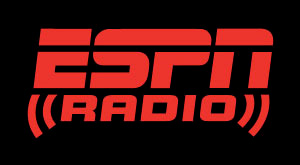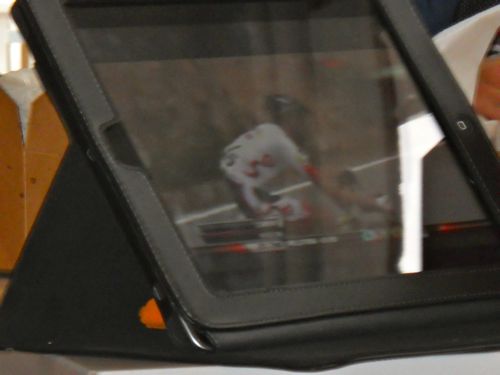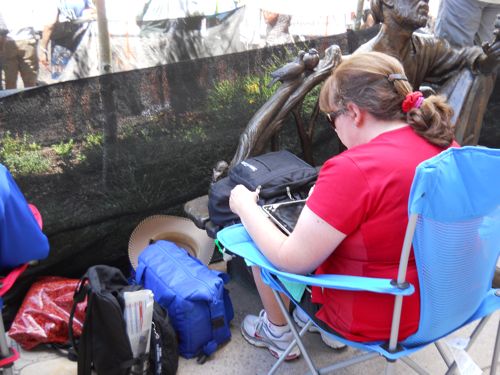Fans and teams may be the big early winners in the cellular industry’s nationwide push to bring better phone reception to crowded places, an effort currently led by AT&T’s aggressive plan to build localized Wi-Fi networks inside major sporting venues like San Francisco’s AT&T Park and Chase Field in Phoenix.
To alleviate the bandwidth crush caused by the relatively new phenomenon of fans who want to shoot and instantly share pictures, videos and text messages from their seats, AT&T is partnering with teams and schools to build Wi-Fi networks directly inside the stadium walls, providing a better, faster Internet connection to those in attendance. Atlanta’s Turner Field, Stanford Stadium and Minute Maid Park in Houston have also received AT&T network attention, part of a Ma Bell strategy to improve cellular coverage by bringing in Wi-Fi and other network improvements right to the fans in the seats.
“The dynamic of what fans are doing with their phones has changed dramatically just over the last year,” said Dennis Whiteside, assistant Vice President for marketing and technical sales in AT&T’s Wi-Fi group. “People want to share the experiences of being at the game as it’s happening. And, they also want ubiquitous cellular coverage wherever they are.”
As anyone who’s ever attended a big trade show or a sporting event in the past knows, cellular coverage often deteriorates rapidly whenever a big group of folks congregates in a small geographical area, like a stadium or convention center. But the explosion of fans with smartphones like Apple’s iPhone, Whiteside said, has created a unique phenomenon of mobile use: At many games now, fans send out more cellular data then they receive, putting a whole new demand on networks that were never designed to handle big chunks of mobile video and picture-sharing in both directions.
“The whole social media phenomenon of instant sharing has led to us seeing instances where upload traffic from stadiums is greater than the download traffic,” Whiteside said. “That was something we didn’t see even just one year ago.”
While AT&T and other cellular providers are constantly upgrading and adding regular cellular towers to improve performance, the sheer numbers of fans inside a stadium makes it nearly impossible to provide sustained connectivity via the regular cellular network. Not only is it extremely costly to build out regular cellular towers — each location can cost in the hundreds of thousands of dollars — but even if you put antennas everywhere including on the goalposts, the physics of wireless spectrum at celluar frequencies still wouldn’t be able to keep up with the bandwidth crush of tens of thousands of fans all wanting to update their Facebook page.
Enter Wi-Fi, which solves the local bandwidth problem by allowing network providers to build fast networks with many inexpensive antennas and access points, using unlicensed spectrum. The best news for fans is that since almost every device made these days has a Wi-Fi chip, their phone or pad will probably connect without any modification or upgrade needed. And, in most cases, the Wi-Fi access is free, especially if you are already a paying customer of the provider running the network.
“Wi-Fi is great because it provides capacity where we need it most, either in the walkways under the stands or in the tight bowls of the stadiums,” Whiteside said. “And for the customers it’s great because using Wi-Fi doesn’t count against their [cellular] data plans.” AT&T also uses a technology called Distributed Antenna System, or DAS, to bring a greater number of smaller cellular antenna endpoints closer to crowds. Traditionally used inside buildings, DAS is now making appearances outside as well and is often used by AT&T as part of an overall network-improvement strategy.
For many new smartphone users, just figuring out how to switch to Wi-Fi can be a challenge given all the new buttons, screens and icons they have to learn. That’s why AT&T and other providers like Verizon are doing their best to make it easy for users to switch over to Wi-Fi, even automating the process in some cases. In AT&T networked parks, Whiteside said, AT&T customers can configure their devices to switch automatically to a Wi-Fi network if one is available, a kind of simplicity he said is becoming the expected norm.
“Our customers expect us to deliver great wireless access, and they don’t want to have to figure out where that is,” Whiteside said. “Awareness of Wi-Fi as a feature is very high — people know they can use it at home or when they are on the road. But letting them know exactly where they can go and where they can use it in non-standard places [like stadiums] is still a challenge.”
For teams and schools, the benefits of a souped-up stadium network may just be emerging in features like the ability to communicate with fans at the game, to offer wireless concessions orders, show instant replay video, and maybe just to help with ticket sales.
“People want to be at the stadium and have the game-time experience, but they also want to be able to communicate,” Whiteside said. “The competition for buying a ticket is usually the home theater or the couch. For owners of stadiums, having a solid network is a great benefit.”














